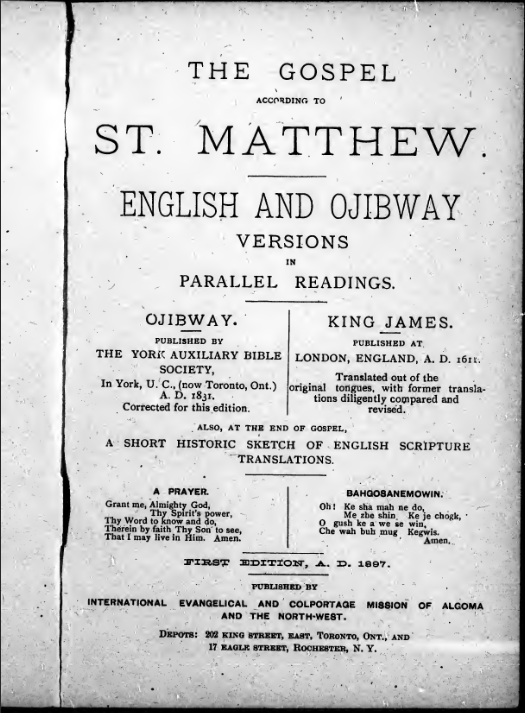Click on the “play” button to hear the diary episode read aloud, and click on the green tab 1 to learn more about a word or phrase.
Find Du Vernet on a map.
While at breakfast an older Indian Woman 2 (who had opposed the mission, pulling up the stakes when the land was marked off) opened the door, and seeing us at breakfast, slammed it again. Then an Indian 3 girl came and sat down in the kitchen, and then an Indian man came in and looked round for a chair. When given one, he sat down. After breakfast I was asked to have prayers 4 but I thought it was an opportunity not to be lost and asked Mr. Johnston to have the Indians all come in. There were four: a man, a woman, a girl, and a young man. They seemed to listen, but remained seated 5 while we knelt in prayer. Once two of them passed a remark in a low voice 6 . Mr. Johnston read a portion of the New Testament in Ojibwa 7 , then explained it and prayed in the same tongue. I prayed earnestly for the souls in heathen darkness 8 . The man sat with half closed eyes.
[July 14th, 1898]
